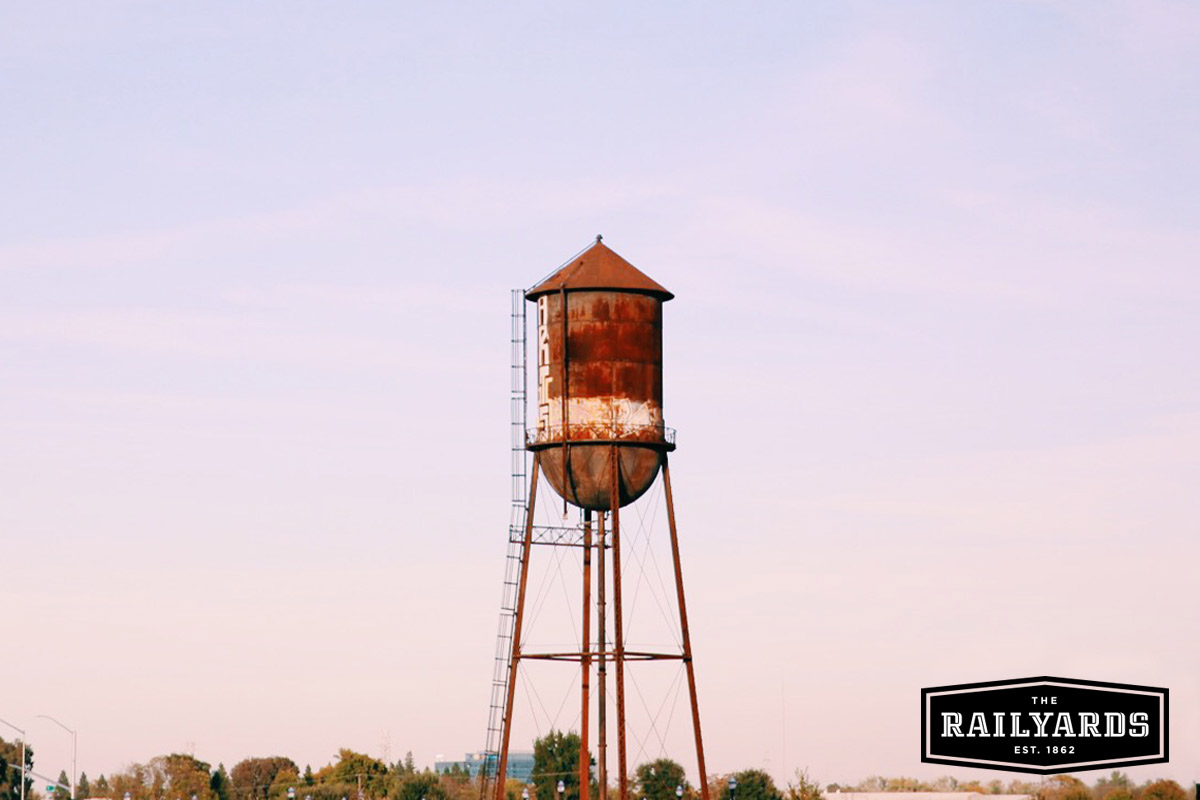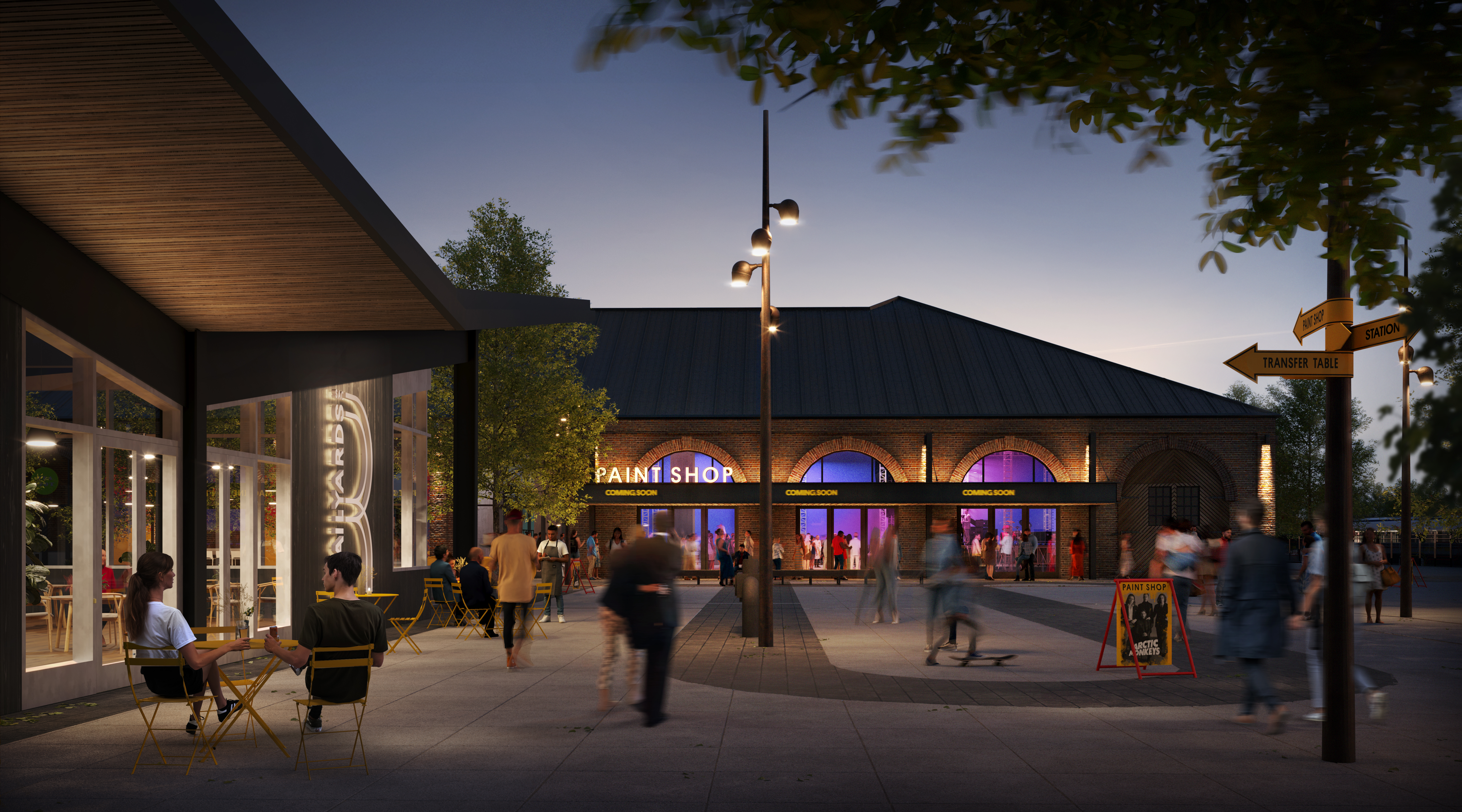
December 22, 2021 / Author: the Railyards
Discover the historical landmarks you’ll discover at the Sacramento Railyards, including the historic Central Shops and the Sacramento Valley Station.
The Sacramento Railyards has been a part of the tapestry of Sacramento’s history for centuries. This history is visible throughout the 244 acres of the Sacramento Railyards and plans to give the property new life as an infill development include efforts to preserve and celebrate that history.
Discover the story of the Sacramento Railyards with this brief tour of the fascinating historic landmarks you’ll find at The Railyards.
Explore the Historic Landmarks of the Railyards

Image by Coruscating Images
#1: The Central Shops
We start our journey into the exciting history of the Sacramento Railyards in the Central Shops. The iconic brick silhouettes of these buildings are the first thing many of us think of when picturing the Railyards.
The Central Shops are the historic heart of the Railyards and were listed on the Sacramento Register of Historic and Cultural Resources in 2007. They consist of eight buildings dating back to the original Central Pacific Railroad Yard built between 1868 and 1917. In the early 20th century the historic Central Shops District was one of the largest industrial sites in the country. The Central Shops were the largest single employer in the Sacramento region until after World War 2.
The eight buildings of the Central Shops housed the functions that would make the Sacramento Railyards a major player in the development of California’s economy. This included:
- The Erecting Shop
- Masonry Water Closet
- Blacksmith Shop
- Car Shop 3
- Planing Mill
- Paint Shop
- Boiler Shop
- Car Machine Shop
- Turntable for transferring locomotives and cars
The Central Shops have a bright future ahead of them as part of the Railyards. They will be home to unique shopping, welcoming plazas, and an expansion to the Railroad Museum.

Image by Coruscating Images
#2: Sutter Slough
The next historic site on our tour is a landmark that’s long gone. Imagine, in lieu of the Central Shops, a sprawling lake. This body of water was called by many names, including Sutter Slough, Sutter Lake, China Slough, and China Lake.
This lost lake once extended from 3rd to 5th Streets and north of I Street in Sacramento. Sutter Slough was a seasonally flooded lake that wreaked havoc on a young Sacramento in the late 19th and early 20th centuries.
To imagine what this lost lake would have been like, close your eyes and picture everything from 3rd and 5th Streets to the Railyards north of I Street underwater. This flooding wreaked havoc on a young Sacramento. The worst of his flooding was in the winter of 1861 when floodwaters were as deep as fifteen to eighteen feet in some areas. After that, the Railroad began filling in the lake in 1863. By 1910, the lake was completely filled in.
The site of the lake is now California State Historic Landmark #594.

Image by Lauren White
#3: The Water Tower
600 feet away from the Central Shops and the former site of Sutter Slough, near the corner of 5th Street and Railyards Boulevard, stands the water tower.
This beloved historic water tower was built in 1931 as a way to prevent devastating and often unpredictable fires that occurred in the old Railyards buildings. The tower held 100,000 gallons of water and provided a constant supply of water for the operation of the Railyards and the shop yard’s internal fire department.
It is listed on the Sacramento Register as a historic landmark.

#4: Sacramento Valley Station
The final stop on our tour lies just across the railroad tracks from the Central Shops. This is the Sacramento Valley Station, an iconic building that has greeted travelers to Sacramento for nearly a century.
The Sacramento Valley Station opened in 1926 under the name of the Southern Pacific Railroad Sacramento Depot. The station saw decades of use by first Southern Pacific and later Amtrak until the City of Sacramento purchased the building. The station was fully restored 90 years later in 2016 and is set to become a central point of transportation for the city by 2040.
The Sacramento Valley Station is listed on the National Register of Historic Places in recognition of its role in Sacramento and California history.
While visitors to the Railyards will enjoy the modern marvels of comfortable housing, entertainment, and easy transportation, the project is also designed to pay homage to the site’s storied past. Read more about how the Railyards is celebrating its historic legacy.
Featured image by Coruscating Images.











